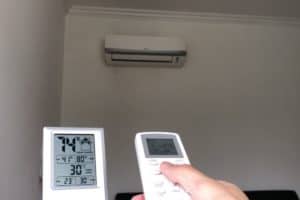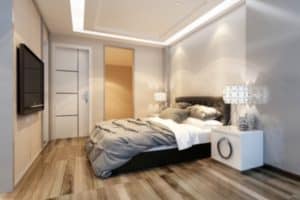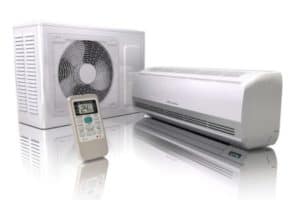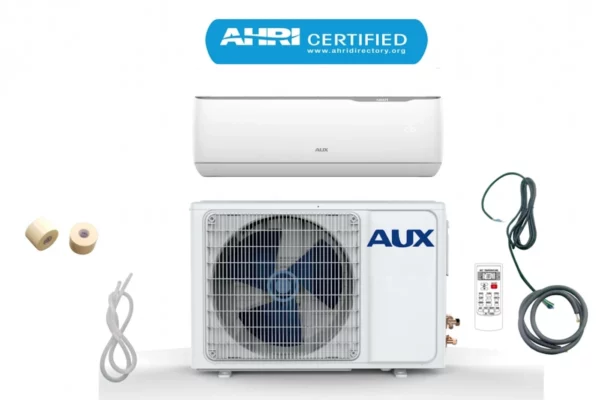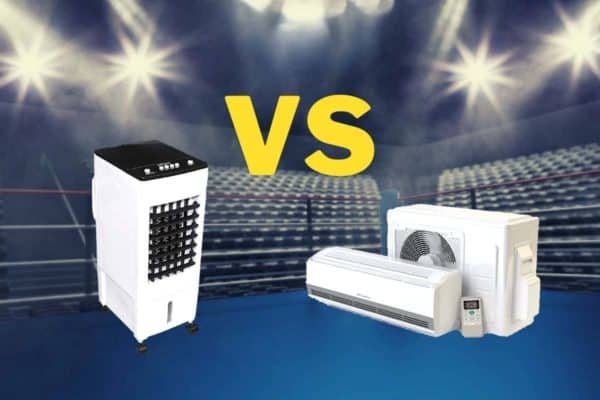6 Types of Filters in HVAC (Efficiency & Applications)
Most HVAC air filters are used to protect the air conditioner itself. However, there are some filters that are meant to maintain good indoor air quality. So, what are the common types of filters in HVAC?
Generally, there are 6 common types of HVAC filters:
- Air Conditioner Filter
- Media Air Filter
- Pleated Air Filter
- Bag Air Filter
- Electrostatic Air Filter
- HEPA Filter
These 6 types of HVAC filters are sorted according to their efficiency with number one being the lowest and number six being the highest. With that said, let’s take a look at the exact efficiency rating and what’s their applications.
1. Air Conditioner Filter
The plastic mesh air filter that you found inside mini split air conditioners doesn’t really have an official name. Most people called it simply as air conditioner filter. Some people do refer to it as washable filter.

Generally, air conditioner filters don’t block small particles as good as other types of HVAC filters. They only trap dirt such as dust, insects and hair to prevent them from clogging the cooling coil and causing problems such as poor efficiency and low airflow.
Because air conditioner filters are made of durable plastic material, they can be washed over and over. In other words, they are highly reusable and therefore, they are extremely affordable.
However, air conditioner filters are mainly used to protect the air conditioner rather than clean the indoor air for you. Although they do block dust, they are not able to filter out bacteria and viruses that may cause health issues such as asthma and allergy.
Typically, air conditioner filters can last as long as the air conditioner itself unless you accidentally damage them. Even so, replacing them is very cheap and easy to do.
Other than mini split air conditioners, most ceiling cassette air conditioners also use this washable plastic mesh filter. However, some ceiling cassette air conditioners use a media air filter that provides better air filtration instead.
2. Media Air Filter
Media air filters are sometimes referred to as panel air filters or fiberglass air filters. Generally, media air filters have a housing, sort of like a cage that holds a piece of filter media which, the filter media is usually made of polyester fiber.

Media air filters have a higher filtration grade than the air conditioner filters mentioned earlier. Usually, media air filters have a filtration grade of around G4 or MERV7.
With polyester fiber media, this type of filter can trap finer particles. Apart from dust, insects and hair, media air filters also can trap mist, fog and pollen which may reduce some of the smell in your house.
Nevertheless, the primary function of media air filters is still meant to protect the air conditioner. However, they do clean the indoor air mildly for you. People who have allergies may feel better with this type of air filter.
Media air filters are commonly used in fan coil units (FCUs). They are soft to touch and washable for about 3-4 times before they need to be replaced with a new media but not the housing.
Sometimes, media air filters come in multiple small pieces, connected by hinges to allow them to be folded and installed when there is not enough space for one big piece.
In commercial buildings, rolls of filter media are kept in the store. When it is time to replace the media air filter, the maintenance personnel will cut the media into the appropriate shape and replace it with the dirty media in FCUs.
Media air filters are low-cost. They are very easy to install, clean and maintain.
In the meantime, I would like to inform you that you can learn quicker by getting my HVAC Begin (eBook) if you’re a beginner. But, if you have a year or two of experience, then I would suggest you consider my HVAC Basics (eBook). Nonetheless, I encourage you enroll in my HVAC Beginner Course: 10 Days to Become Competent in HVAC if you want to equipped yourself with a complete set of basic HVAC skills.
HVAC Beginner Course
Learn the most basics and foundational HVAC skills including cooling capacity calculation, equipment selection, duct sizing, pipe sizing, exhaust fan sizing, controls, electrical and more.
3. Pleated Air Filter
Pleated air filters are similar to media air filters but they are not as soft to touch as media air filters. Although we can bend the polyester fiber of the media air filters to make them look like pleated air filters, it is different from this type of filter.
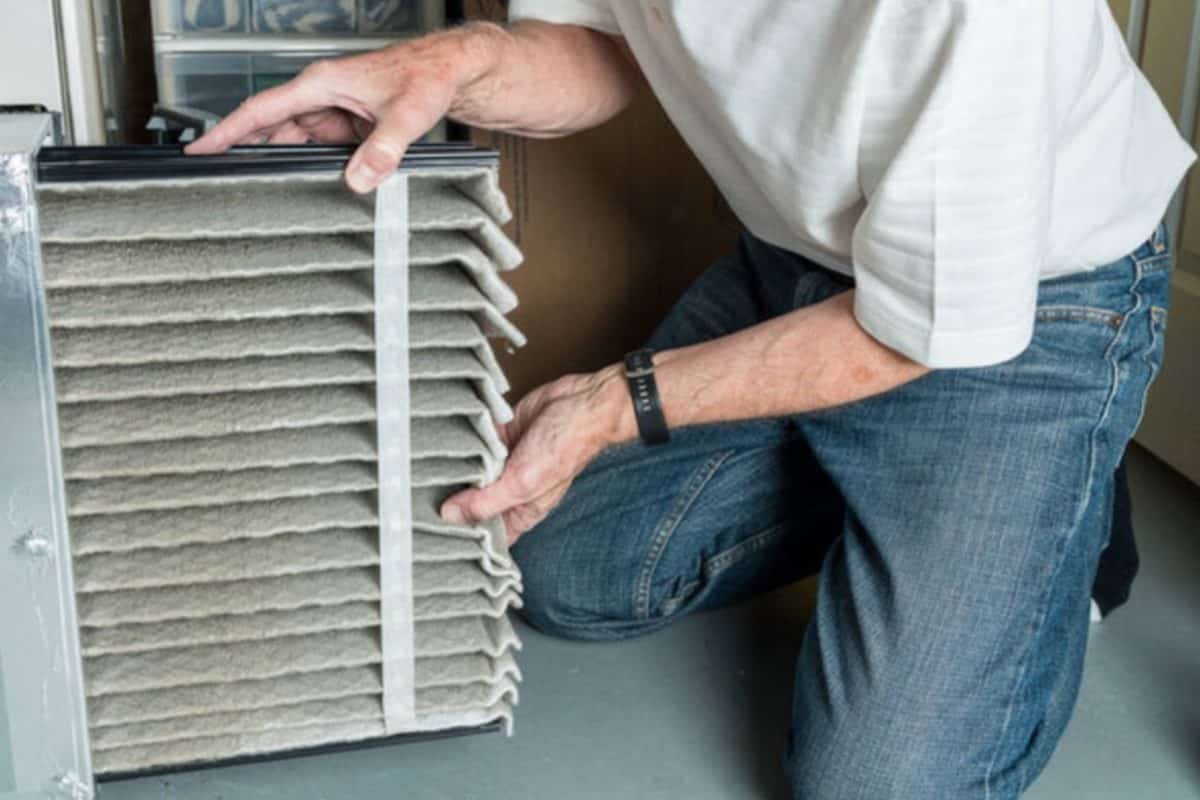
Generally, pleated air filters feel more like a cupboard. Meanwhile, media air filters feel more like cloth. In the United States, most central air conditioners are using pleated air filters.
Many pleated air filters have the same filtration grade as media air filters. However, some of them are available at around F5 or MERV10. At this filtration grade, bacteria, mold and dust mites can be trapped on top of mist and hair.
Because pleated air filters are harder than media air filters, they are more suitable to be used in air handling units (AHUs) since AHUs have a higher airflow rate than FCUs. If media air filters were used in AHUs, they could be torn by the strong suction force.
Pleated air filters have deep trenches that can trap particles effectively. At the same time, they are harder to clean. Similar to media air filters, they usually need to be replaced after 3-4 times of washing.
However, unlike media air filters, you need to replace the entire filter instead of only replacing the filter media. Hence, pleated air filters are more expensive to maintain and are sometimes known as disposable air filters.
People working in the HVAC industry often refer to pleated air filters as primary filters or pre-filter of AHUs. Most of the time, AHUs have two filters; one is called primary filter and the other one is called secondary filter which has an even higher filtration grade.
4. Bag Air Filter
Bag air filters are also known as pocket air filters. They are most commonly used as the secondary filter of air handling units (AHUs). Their filtration grade is usually around F7 or MERV13 which can be considered as sub-HEPA filters.
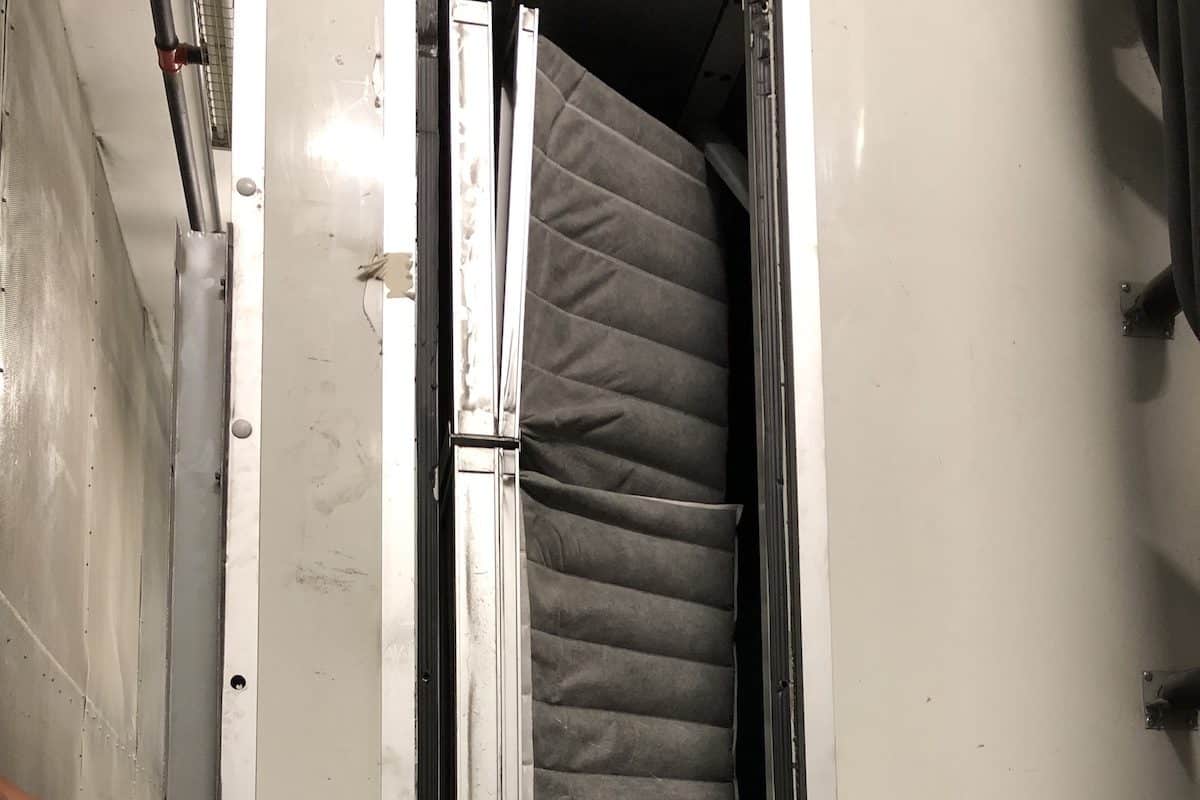
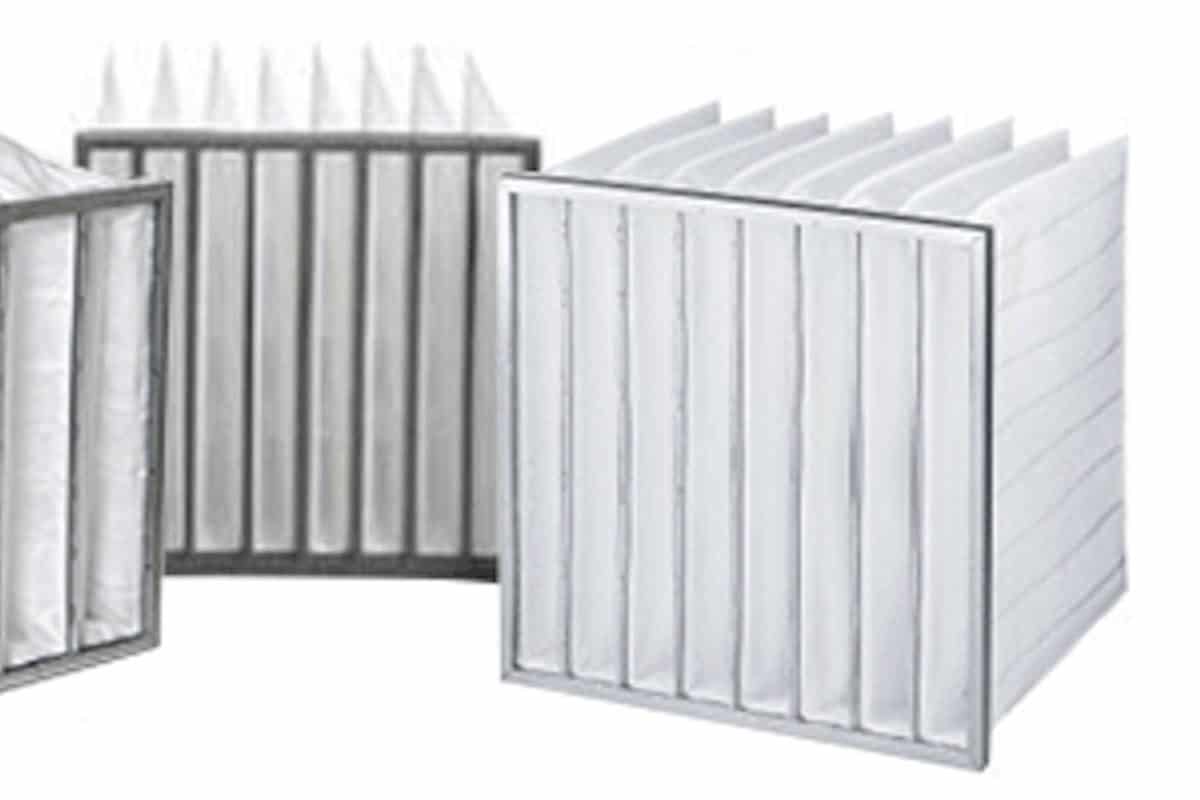
Unlike all the above mentioned filters, bag air filters cannot be washed even once. They need to be replaced entirely once every one or two months depending on their dirtiness.
Bag air filters are able to effectively block wildfire smoke, haze, sneeze droplet and face powder. Most of the time, they can be found inside the AHUs of hospitals and clean rooms.
It is quite costly to use bag air filters because the initial cost of AHUs is higher due to the AHUs being physically bigger in order to have enough space for an additional bag air filter on top of a primary pleated air filter.
Almost all AHUs have a primary filter before the secondary bag air filter because the primary filter will trap bigger particles and thus, not allow them to be stuck on the bag air filter thereby prolonging the lifespan of the more expensive bag air filter.
Many times, the primary filter is washed 3 times before the secondary bag air filter is replaced alongside the primary filter after two to three months.
With a bag filter, the air conditioner no longer protects only its cooling coil but this time, it also removes harmful particles and maintains good indoor air quality.
5. Electrostatic Air Filter
An electrostatic air filter or electrostatic air cleaner (EAC) has 3 sections; a) pre-filter section, b) charge section and c) collector section. EACs are the combination of a primary filter and a secondary filter.
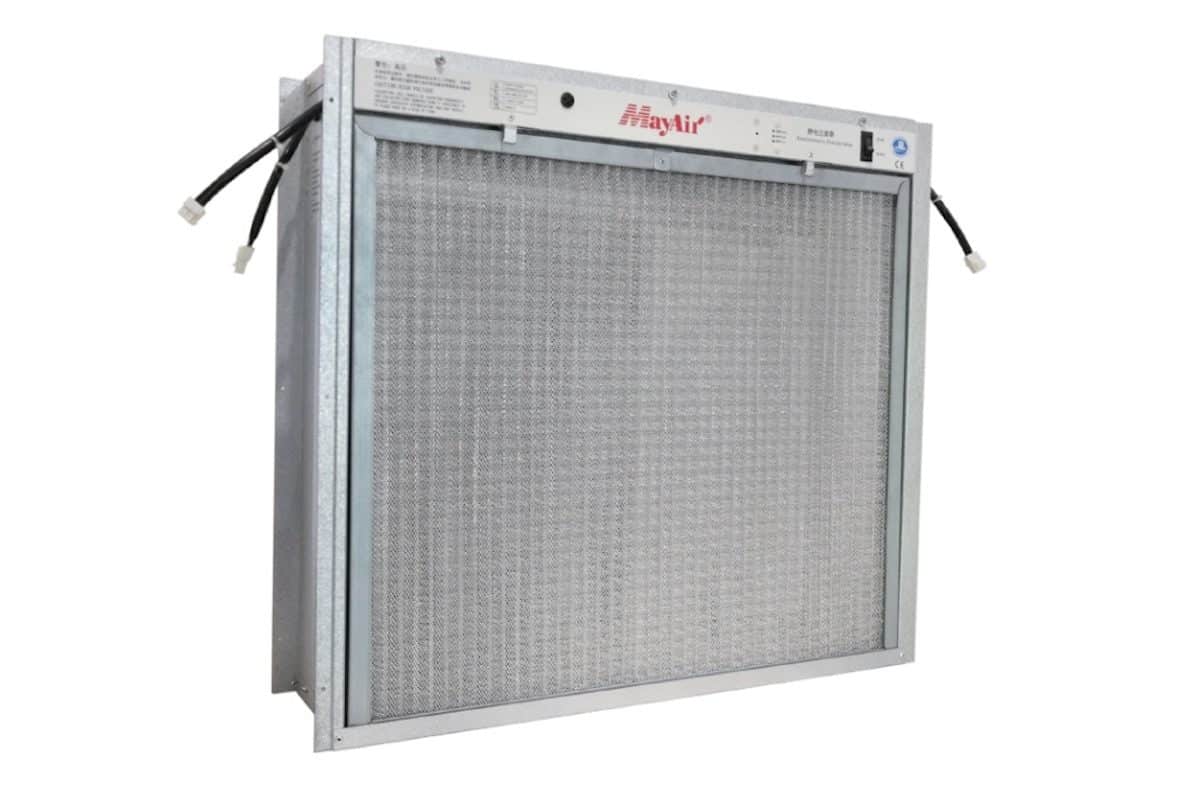

With an EAC, the secondary bag air filter is not required anymore. The filtration grade of a high-efficiency EAC can go up to around F8 or MERV15.
EACs work by blocking large particles using a pre-filter (usually a washable media air filter). Then, the particles are positively charged by the EAC ionizer at the charge section. Finally, the positively charged particles are attracted to the negatively charged plates at the collector section.
Compared to having a secondary bag air filter, using an EAC allow the AHUs to be slightly smaller. Furthermore, the overall efficiency of the AHUs is better due to the low-pressure drop characteristic of EACs.
However, the initial cost of the AHUs is higher when fitted with an EAC because EACs are more expensive than bag air filters. Besides, there are additional wiring works associated with EACs.
Nevertheless, EACs are washable. Their pre-filter can be cleaned or replaced after a few times of washing. Their collector plates can be washed fairly easily. However, an interlocking mechanism must be in place for safety purposes.
EACs are preferred in high-end buildings because they can provide more information such as operating status, cleaning indicators and faulty indicators to the building management system (BMS).
6. HEPA Filter
HEPA filters or high-efficiency particular air filters are the type of HVAC filters that have the highest filtration grade. Most of them are around H11-14 or MERV17-20.
AHUs for the isolation room and operation theater of hospitals are always fitted with HEPA filters. Besides, certain cleanrooms such as semiconductor assembly rooms and laboratories require AHUs with HEPA filters.
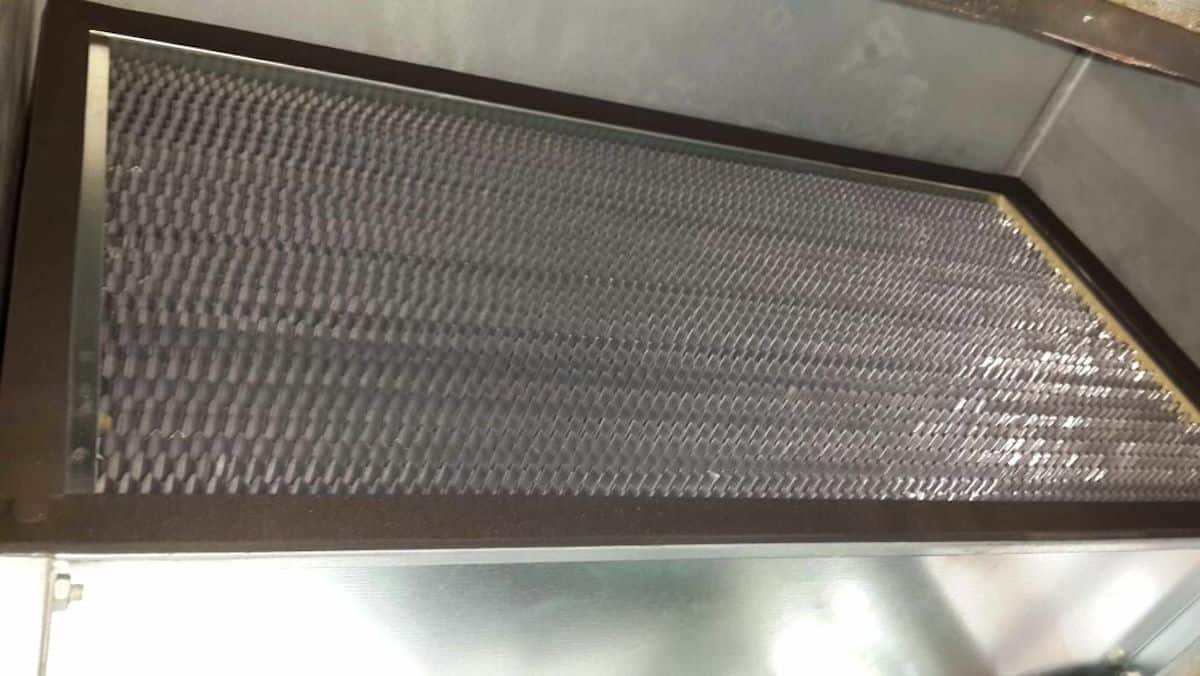
Many HEPA filters are made of fine fiberglass material. They can capture dust, mold, pollen, smoke, bacteria and viruses. However, they are very costly to install, replace and dispose.
Generally, HEPA filters must be disposed carefully because they contain harmful bacteria and viruses. Hence, HVAC technicians must wear a face mask and a pair of gloves when handling HEPA filters.
HEPA filters are not washable. They must be replaced entirely and very frequently in order to maintain the desired level of indoor air quality. Some HEPA filters are replaced twice every month.
Both AHUs and FCUs can be fitted with a HEPA filter. However, they need to have a stronger fan because the pressure drop of HEPA filters is high. Otherwise, problems associated with low airflow will occur.
Commercial buildings such as shopping malls, offices, retail stores and universities don’t require AHUs that are fitted with HEPA filters because extreme indoor air quality is unnecessary.
Once again, you can get my Chilled Water System (eBook) to quickly learn more about chilled water system. But, if you want to learn how to design a chilled water system from start to end, I encourage you check out my Chilled Water System Design Course.
Chilled Water System Design Course
Learn how to design a chilled water system with AHU/FCU selection, chiller sizing, cooling tower sizing, pump sizing, piping design, ductwork design and more.
If you have anything to add (or ask) about this topic, leave a comment down below!



